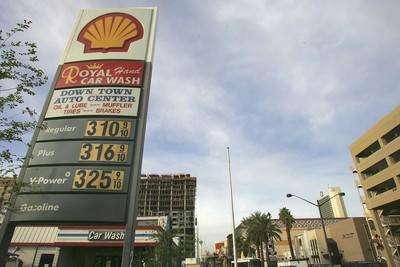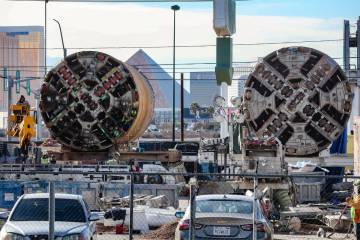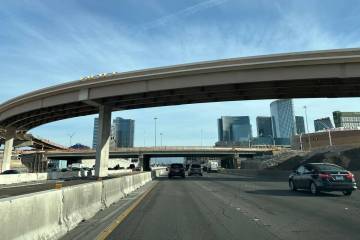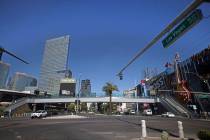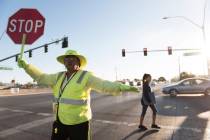Drivers whine, shrug, fill their tanks
A few years back, when gasoline first topped the $2 per gallon barrier, we collectively screamed bloody murder and vowed to buy bicycles. Last year, when pump prices flirted with the $3 mark, we cried like a schoolgirl with a scraped knee and planned to car pool with the whole neighborhood.
Now, the cost of gasoline is breaching $3 again, with the potential to keep on rising far beyond that. And what's the general reaction? We shrug our shoulders, mumble a curse to the oil gods and top off the tanks of our monster SUVs.
No, we don't like the idea that some fat-cat corporate kingpins or money-mad mullahs are picking our pocketbooks clean. Not at all. It's just that gasoline going for $3 a gallon -- or $2 a gallon, for that matter -- isn't the line in the sand it once seemed to be.
That's no surprise to Daniel Howard, the marketing department chairman of Southern Methodist University in Dallas and a specialist in consumer behavior.
"Once you get past a certain point, people become immune" to what once seemed like insanely high prices, Howard said last week.
A few years back, Howard introduced me to the concept of "perceptual contrast," something that the passing of time has shown to be a pretty good description of our emotional state these days at the ol' Pump 'N' Go.
Simply put, a $3 pump price has lost its ability to shock people because $3 a gallon isn't bankrupting most of us. And without that shock, it's back to business as usual for us drivers, albeit with a higher price tag.
"They don't have the same emotional reaction to increased (price) levels as they do an initial price increase," Howard said. "When it went to $2 a gallon, that was a first for the American economy. We had a strong emotional reaction. Now, we've become numbed."
Why? Consumers simply took a look around and realized that the world wasn't gonna fall apart because gasoline was going for three bucks per.
"You've got to go back to the (first) $2 raise. There was much uncertainty to what that really meant in the future. People started making scenarios up in terms of what would happen" negatively to the economy and consumer spending, Howard said.
"It didn't end up meaning a whole heck of a lot," he said.
So adding another buck wasn't desirable, but it was hardly disastrous.
"If they could survive $2, they can survive $3," Howard said. "People think, 'I got myself worried and worked up over $2, and look what happened. Nothing. I'm not going to get worried about $3.'"
That's precisely where we are right now, as gasoline prices make a typical springtime surge that should result in the highest prices of the year, if not ever, around Memorial Day weekend, the traditional kickoff to the summer driving season.
On Friday in the Las Vegas Valley, regular-grade gasoline prices averaged $2.95 a gallon, up 34 cents from the same time in 2006, according to AAA's Fuel Gauge Report. (Our record high average of $3.18 was set last May 17.)
Nevada's statewide average of $3 was the nation's second-highest norm, exceeded only by California's average of $3.28 per gallon for regular grade. There, metropolitan averages were as high as $3.40 in San Francisco, where premium averaged $3.68, AAA said.
If you think I'm full of junk and that people won't stand for today's sky-high gasoline prices, I'd suggest taking a peek at our still-crowded highways and mostly empty bike paths. On an anecdotal basis, our driving habits are pretty much the same. Statistically, we're guzzling gasoline more than ever.
In the last week of March, American drivers sucked down more than 9.2 million barrels of refined gasoline every day, according to the U.S. Energy Information Administration. That was actually more than 200,000 barrels per day more than the same week one year earlier.
When would most drivers start crying uncle, and really mean it?
If they truly couldn't afford a price increase, and in order to pay for gasoline started cutting back on luxury items. Like food and shelter.
"If the price increase was felt in other parts of the consumer's life or pocketbook, there would be a very strong emotional reaction. If it went to $5 (per gallon), I'd expect that you'd see a reaction" that could discourage oil producers from raising prices any further.
"I think that they do consider consumer reaction. Consumer reaction can result in a political reaction," Howard said.
Generally, oil industry analysts have pegged that pricing pain point at somewhere between $4 and $5 per gallon, pricing points we're inching closer to with every price surge. Then again, some observers used to say the same thing about $3 gasoline.
A Goldman Sachs Group report in 2005 estimated prices would only level off after demand does, and the latter would only happen when the percentage of income we spend on gasoline nears what we spent during gasoline crises almost 30 years ago. That would be around 6 percent of disposable income, or around $4.30 per gallon.
"Prices haven't even started to rise," Howard said.
In the meantime, drivers shouldn't expect much relief. If we're still buying, they're still selling at whatever cost they can get away with, whether we whine or not.
"I'm sure they're quite pleased with the consumer reaction," Howard said.
Yep, oil honchos have us figured out: Watch what we do, not what we say.
If you have a question, tip or tirade, call the Road Warrior at 387-2904, or e-mail him at roadwarrior@reviewjournal.com or OSofradzija@reviewjournal.com. Please include your phone number.
ROAD WARRIORMORE COLUMNSDiscuss this column in the eForums!
Starting tonight, the southbound U.S. Highway 95 ramp to eastbound Lake Mead Parkway in Henderson will have overnight closures from 9 p.m. to 5 a.m. through Friday morning to allow road work. Drivers can detour to the Auto Show Mall Drive exit. Also starting tonight, drivers can expect lane reductions on Las Vegas Boulevard between Carson Avenue and Ogden Avenue until 5:30 a.m. Monday to allow paving work. Various downtown street closures are in effect to allow the Vegas Grand Prix today. Closed major streets include Main Street between Bonneville Avenue and Ogden Avenue; Bonneville between Main and Martin Luther King Boulevard, and Grand Central Parkway from Bonneville to Main, among other streets. Roads that will remain open in that area include Interstate 15, U.S. Highway 95, Las Vegas Boulevard and Charleston Boulevard, among other streets. Drivers are asked to avoid the area today, if possible, or expect delays. More information on traffic, alternate routes and parking is available online at www.vegasgrandprix.comwww.vegasgrandprix.com or www.lasvegasnevada.com. Also, Citizens Area Transit routes 105, 106, 108, 207 and "The Deuce" may have detours in the downtown area, and most stops along Grand Central, Main and Bonneville will be temporarily discontinued through at least today due to the race. More bus information is available at www.rtcsnv.com or by calling 228-7433. Also, the Greyhound bus depot at 200 S. Main will be closed today due to the race. Greyhound intercity bus service will temporarily operate today from the CAT Downtown Transportation Center, 300 N. Casino Center Blvd. Drivers can expect lane restrictions on northbound and southbound Interstate 15 between the California-Nevada state line and the Cajon Pass near Devore, Calif., in San Bernardino County, Calif. Drivers should expect delays and watch for updates on specific closures. To sign up for e-mail alerts on I-15 road work in California or for more project information, go online to www.caltrans8.info. For phone updates on Southern California road work, call (916) 445-7623 or (909) 383-7960.



